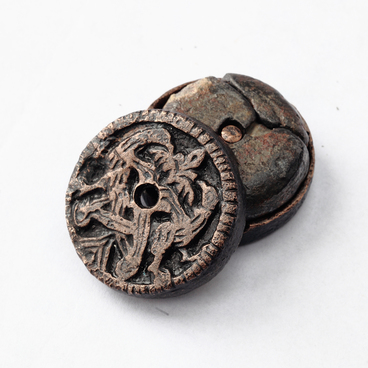Since antiquity, many peoples had the custom of installing tombstone monuments with inscriptions. Thanks to such monuments, scientists discover ancient languages and cultures. Experts associate the tradition of placing stones on burials in the Urals and the Volga region with the spread of the Muslim religion in this territory. From the Golden Horde period of this medieval state, epitaphs written in Arabic script have survived to this day. Such monuments are found in Arabia, Central Asia, and the Caucasus.
The preserved epigraphic monuments of the Volga Bulgaria cover a specific historical period of the 13th-14th centuries. In those years, the stone elevation above the grave was made sharp or in the form of an arch. The were also other stylized figures.
The burial culture of the Volga Bulgaria was also influenced by the Turkic traditions. The historian Marsel Akhmetzjanov writes about this in his works. He points out that the idea of erecting memorial stones was brought to the Bulgars by the Karakhanid Tatars, serving in the troops of the Horde Batu Khan.
Outwardly, the Bulgaro-Tatar monument was a flat vertical slab. An arch was carved in the upper part of the tombstone. The slab was decorated with ornaments depicting animals, plants, or geometric shapes. An elegant calligraphic inscription accompanied the drawing. The marks could be left by stone-makers or the relatives of the deceased.
The inscriptions on the monuments were usually made in one of three languages: Arabic, Bulgarian or Tatar. Moreover, historians distinguish two more dialects: Bulgar and Old Tatar. In the exposition of the museum, you can see an epitaph dated 1317. It is written in the Tatar language and consists of the following phrases:
The preserved epigraphic monuments of the Volga Bulgaria cover a specific historical period of the 13th-14th centuries. In those years, the stone elevation above the grave was made sharp or in the form of an arch. The were also other stylized figures.
The burial culture of the Volga Bulgaria was also influenced by the Turkic traditions. The historian Marsel Akhmetzjanov writes about this in his works. He points out that the idea of erecting memorial stones was brought to the Bulgars by the Karakhanid Tatars, serving in the troops of the Horde Batu Khan.
Outwardly, the Bulgaro-Tatar monument was a flat vertical slab. An arch was carved in the upper part of the tombstone. The slab was decorated with ornaments depicting animals, plants, or geometric shapes. An elegant calligraphic inscription accompanied the drawing. The marks could be left by stone-makers or the relatives of the deceased.
The inscriptions on the monuments were usually made in one of three languages: Arabic, Bulgarian or Tatar. Moreover, historians distinguish two more dialects: Bulgar and Old Tatar. In the exposition of the museum, you can see an epitaph dated 1317. It is written in the Tatar language and consists of the following phrases:



